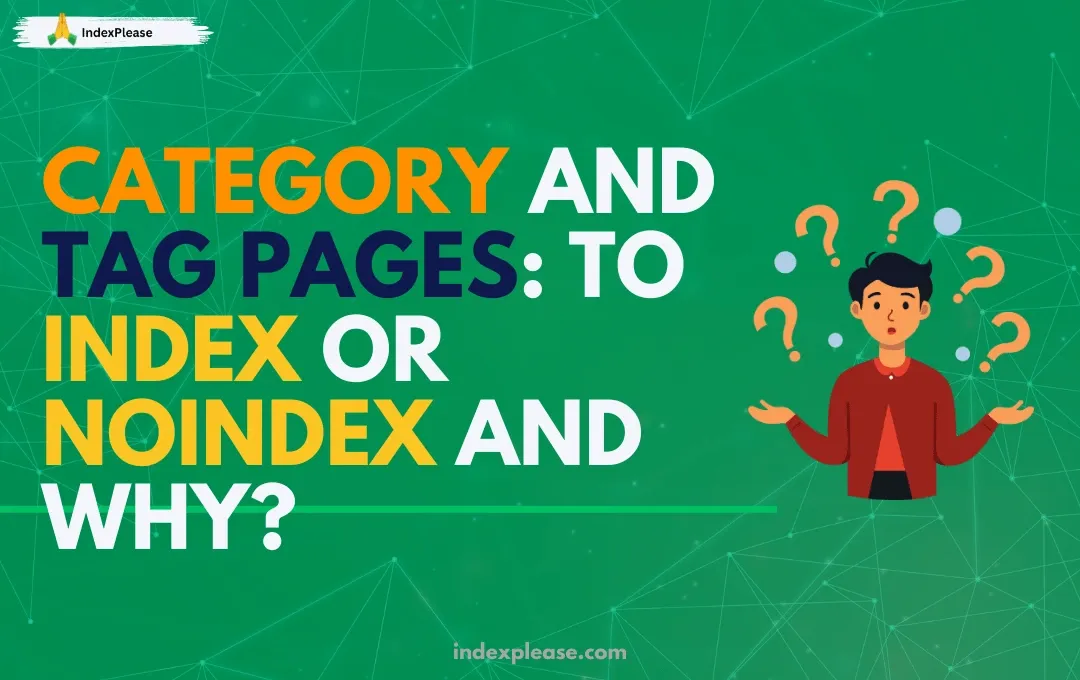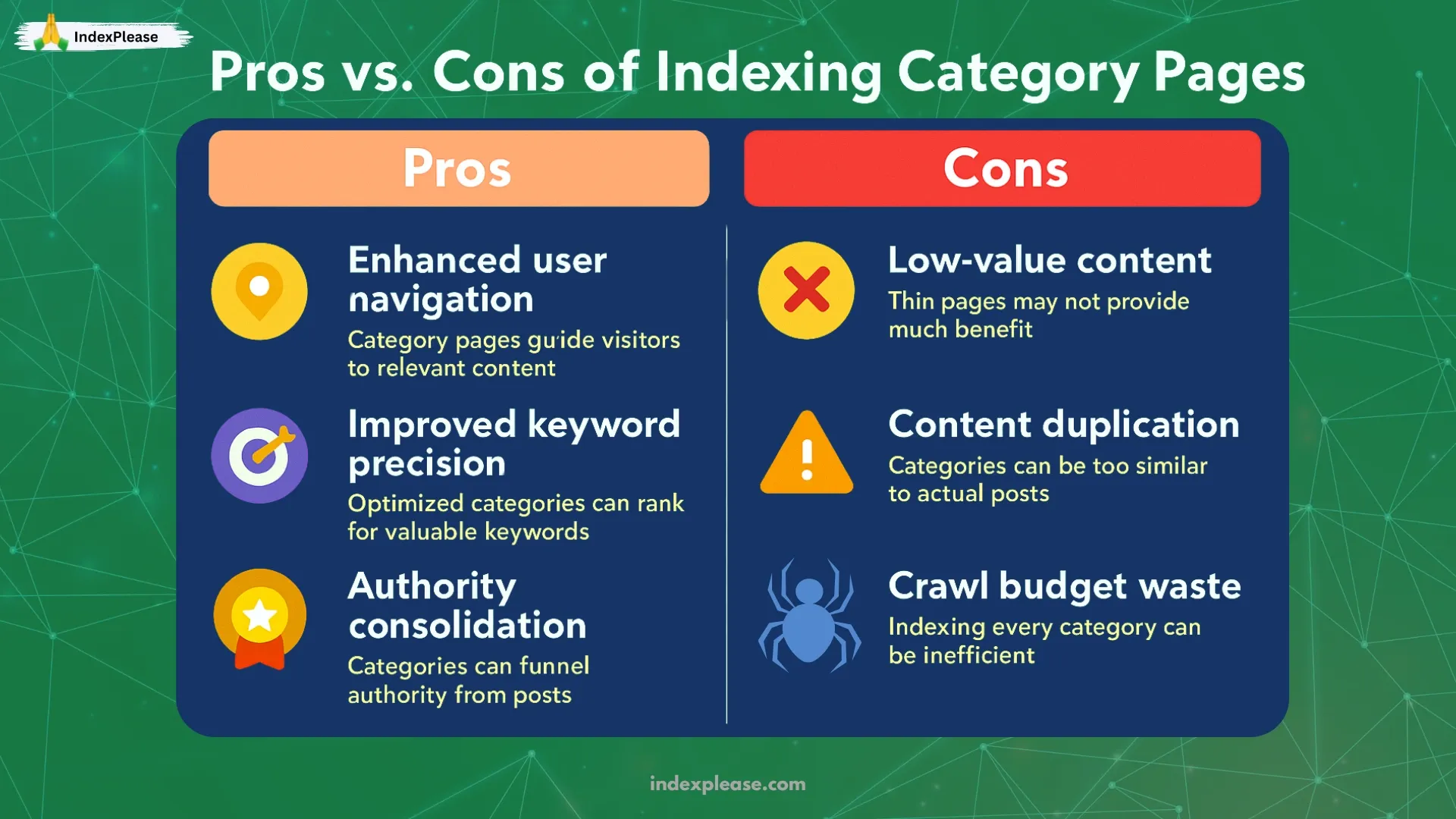
In the field of search engine optimization (SEO), many webmasters ask themselves one question: Should category pages be indexed? This straightforward question can have potential consequences on the site’s visibility and user experience. Having a good understanding of category and tag pages can help you make decisions that suit your SEO objectives.
What Are Category and Tag Pages?
Category and tag pages are crucial in the organization and layout of the website.
Category Pages: These are divisions of broader topics that put together content that relates with each other. For example, a blog about pets might have types such as: “Breeds,” “Grooming,” and “Training”.
Tag Pages: These are a more focused way of organizing content that is often used to denote specific elements or subtopics within a category. A post under “Recipes” could be tagged “Vegetarian” or “Dessert.”
Both of these features are important for a good customer experience, however, their effectiveness for SEO is often contested.
Should Category Pages Be Indexed?

Pros of Indexing Category Pages
1. Enhanced User Navigation: Indexed category pages’ act as gateways, directing users to relevant content. This can enhance user engagement and dwell time.
2. Enhanced Precision with Keywords: Category pages that are optimized correctly can rank for valuable keywords hence increasing organic traffic to the page.
3. Authority Consolidation: Category pages can centralize authority from individual posts, boosting overall site rankings.
Cons of Indexing Category Pages
1. Minimum Value Content: Poorly optimized category pages will add little value for the categorization of content leading to the penalties associated with thin content.
2. Content Duplication Problems: Common cases where categories can be much identical or similar to the individual posts leading to duplication and cannibalism problems.
3. Crawl Budget Misuse: In case of larger websites, it can be costly to index every category and page since it may drain your crawl budget and impact the priority of your site in search engines.
Should Tag Pages Be Indexed?
While tag pages can help users find related content, their SEO value is less clear-cut. Indexing them can lead to:
Keyword Overlap: Similar tags may target identical keywords, diluting the SEO impact of your main pages.
Thin Content: Tag pages often lack substantial content, risking low rankings and potential penalties.
For most sites, it’s advisable to use NoIndex tag pages unless they are uniquely valuable and well-optimized.
When to use NoIndex Category and Tag Pages?
1. Low-Quality Content: If the page provides little value beyond basic links, it’s better to use NoIndex.
2. Redundant Keywords: Avoid indexing pages that compete with your primary content for the same keywords.
3. Irrelevant Pages: For sites with numerous unused or irrelevant categories and tags, NoIndex is the safer choice.
Best Practices for Managing Category and Tag Pages
Optimize for User Experience
Write compelling introductions for category pages.
Add unique meta descriptions and titles targeting specific keywords.
Use clean, intuitive navigation structures.
Set Clear Indexing Policies
Employ the use of ‘No Index, follow’ for tag pages or unused categories so that search engines can be told how to act while efforts are being made to clean and remove clutter from the search results.
Frequently check your website for forgotten or unnecessary categories and tags, eliminating or merging them as you wish.
How to Decide: Index or NoIndex?
The decision to index category and tag pages depends on your site’s size, purpose, and audience. Here’s a quick guide:
| Page type | When to index | When to NoIndex |
|---|---|---|
| Category Pages | Valuable, keyword-rich, and optimized content | Thin, duplicate, or low-value content |
| Tag Pages | Unique, highly optimized, and user-focused tags | Generic or redundant tags |
Even though category and tag pages form the backbone of your website’s structure, should they be indexed? Indexing category pages is a decision that can improve usability and even rankings, but it does run the risk of causing issues with thin content or inefficient crawls. Tag pages, however, are broad in the scope of keywords they may cover and are prone to keyword cannibalism, which means they are better off being NoIndexed unless properly optimized.

IndexPlease gives you the power to create and delete Google index pages in real-time – improving SEO performance without the clutter. Take advantage of better SaaS methods with IndexPlease.com today!
Conclusion
The issue regarding whether or not category pages should be indexed is unique and requires a tailored solution. Optimized and user friendly category pages add value to users and to search engines for many websites which is why they are worth indexing. On the other hand, tag pages usually suffer from ‘NoIndexing’ because importance is placed on avoiding multiplicative SEO strategies.
It is imperative to know your target audience and your website’s structure. Effective management of category and tag pages can create a balance in usability and SEO performance.
FAQs
- What are the consequences of No Index and No Follow?
No Index prevents a page from appearing on the search engine results page while, No Follow stops crawlers from tracing the links on that particular page.
- How can I better my category pages for SEO?
Make sure you include keyword-rich titles and meta descriptions, relevant content snippets for the users, and ensure that the page offers a value proposition.
- Should I NoIndex all tag pages?
Not necessarily. Only NoIndex tag pages that are redundant, poorly optimized, or lack unique value.
- Can indexing category pages improve my site’s SEO?
Yes, well-optimized category pages can rank for targeted keywords and consolidate link authority.
- How often should I audit category and tag pages?
Perform audits at least quarterly to ensure your site structure remains optimized and aligned with your SEO goals.
- What tools can help me manage indexing decisions?
Google Search Console plus SEO plugins such as Yoast or Rank Math are ideal for controlling and changing indexing settings and so monitoring your site SEO becomes easy.